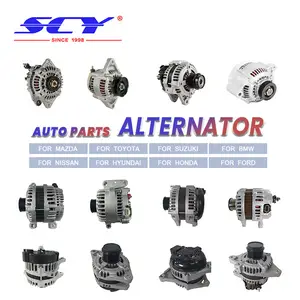
All categories
Featured selections
Trade Assurance
Buyer Central
Help Center
Get the app
Become a supplier














Alibaba.com cung cấp. phụ tùng ô tô phù hợp nhất với yêu cầu về xe cơ giới của bạn. Trong nền tảng này, bạn chắc chắn sẽ mua được các bộ phận từ các thương hiệu hàng đầu trên thế giới dành riêng cho sản phẩm ô tô của bạn. Với năm và mô hình của họ, truy cập các hậu mãi này. phụ tùng ô tô thậm chí còn đơn giản hơn để đảm bảo rằng bạn không thiếu bất kỳ cách nào với tư cách là khách hàng. Khi bạn muốn chiếc xe đó có cảm giác mới khi lái, thì rất nhiều. phụ tùng ô tô có sẵn sẽ hỗ trợ bạn phục vụ.
Những hậu mãi này. phụ tùng ô tô từ Alibaba.com cũng là một cách để làm cho chiếc xe của bạn trở nên mạnh mẽ và thể thao hơn. Phạm vi của ống xả và các sửa đổi tăng áp động cơ khác từ thị trường này có thể mang lại cho bạn một tiếng gầm để cảm thấy thể thao. Những cái này. phụ tùng ô tô cũng đi kèm với sách hướng dẫn dễ hiểu, giúp bạn tiết kiệm chi phí thuê thợ cơ khí. Với những. phụ tùng ô tô, bạn được đảm bảo duy trì hình dạng mới và ổn định cho chiếc xe của mình.
Tính phù hợp của những điều này. phụ tùng ô tô là chúng có chi phí thấp và duy trì chất lượng tốt nhất như OEM. Dịch vụ bảo dưỡng xe cơ giới của bạn phải có chi phí thấp nhất có thể và đó là lý do để bạn sử dụng những dịch vụ này. phụ tùng ô tô. Hướng dẫn dễ dàng để thành thạo về cách thay thế chúng. phụ tùng ô tô cũng hữu ích trong việc giúp bạn kết nối với ô tô của mình và hiểu sâu hơn về nó.
Alibaba.com giúp đáng tin cậy. phụ tùng ô tô để khám phá. Các nhà sản xuất nên mạo hiểm vào không gian này để có quyền truy cập vô song vào những bộ phận này. Nền tảng hứa hẹn quyền truy cập vào các thiết bị nội thất và ngoại thất cho bạn.